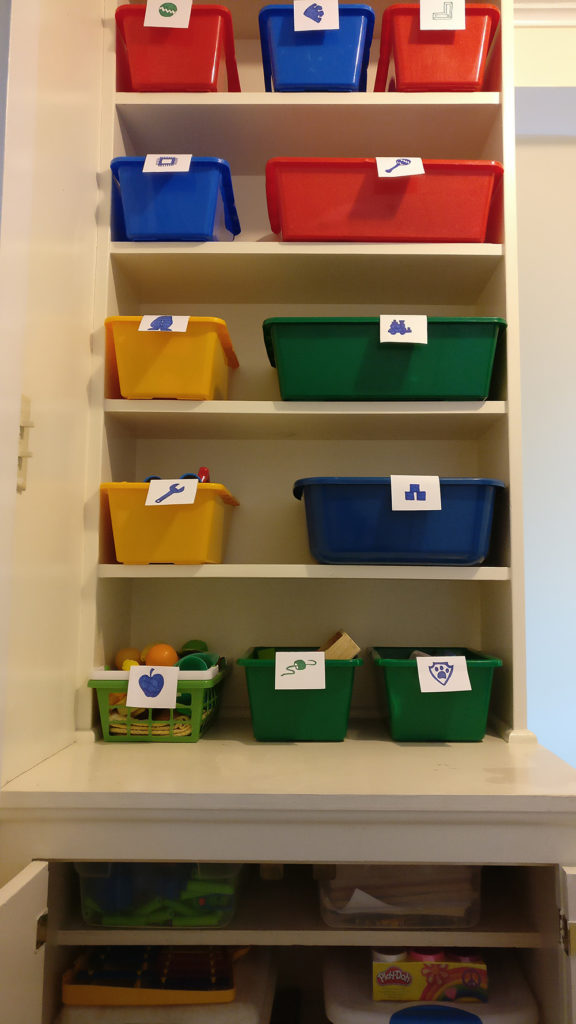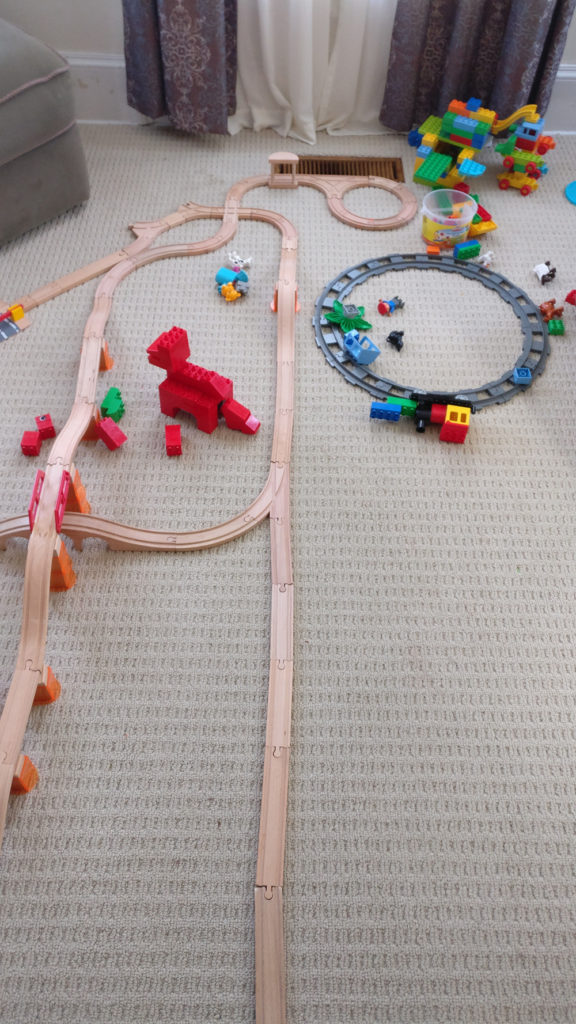Minimalism: A year later – 3 of 4
by Sky Trombly –
After a year of practicing minimalism, the way I approach cleaning and parenting has changed drastically.
Minimalism and Cleaning
“Nature abhors a vacuum and so do I.” – Anne Gibbons, American cartoonist
In very non-minimalist fashion, my husband and I have acquired a large house, two cars, and three kids. Now I have to clean them.
Minimalism has had a tremendous impact on how I keep things clean and how I stay sane (mostly) when the kids fly through the house like cyclones leaving comparable messes in their wake.
The less you have, the less you have to clean…
Fumio Sasaki, in his book Goodbye, Things, poses a hypothetical: Say you have a large owl statue and you need to vacuum. First, you have to move the statue out of the way. Then, you have to vacuum. Finally, you have to move the owl statue back into place. If you didn’t own the owl statue, you’d cut your cleaning list down to a third of the work.
I simplified my spaces so there was less to clean up and to clean around. This means owning less, but it also includes giving everything I do own a home within my home. Cleaning is quicker when stuff has assigned seats. If I find a stray article, I know where it goes. And if I don’t know where it goes, I have to wonder: did this thing wander in unannounced and unwanted?
The less you have to clean with, the less you have to buy, store, breathe in…
I simplified the products and tools I used in cleaning. I buy dishwasher fluid and laundry soap. All the other products I make from a few ingredients: water, vinegar, baking soda, castile soap, tea tree oil, peroxide, and super washing soda. I use a broom, dustpan, vacuum cleaner with canister (no bags), a Swiffer mop with crocheted heads I can wash and reuse. I use rags which are downgraded kitchen cloths (which I prefer over sponges) and towels. I also like to open windows, line dry and use essential oils to spruce up the fragrance in my home naturally.
The less complicated your routines, the more likely they’ll get done…
Many minimalists don’t need to invest a whole lot of time in tidying or cleaning. I hope to get there one day but I have, as I mentioned, three kids aged 5 and under.
I need to clean every day. I find that keeping to a cleaning schedule means that I don’t have to spend valuable energy deciding what to do and I don’t get blind-sighted with unforeseen issues very often as any kinks have long since been worked out.
The best example is with laundry: we all have capsule wardrobes, but no one is ever left without something to wear because I have an orderly washing sequence.
How a cleaning schedule looks will vary vastly from family to family, from home to home. My husband and I, for example, used to wash all our laundry once a week at a laundry mat. Now we have kids, cloth diapers, and our own washing machine, thank goodness.
The trick is to work out what laundry, dish washing, floor mopping, toilet cleaning (etc.) schedule makes you feel like your home stays pretty clean and stick to it religiously. Pretty soon, keeping things clean according to your home’s needs becomes a matter of habit.
 Minimalism and Parenting
Minimalism and Parenting
I believe that my kids are benefiting from my minimalism. They’re constantly exposed to media and peer messages celebrating accumulation. A lot of this exposure is beyond my control. However, I now have tools that I am passing on to them.
Some minimalist concepts that I try to underscore are:
− we can enjoy without owning (using the library, the public pool, and parks)
− space, especially clear space, has value (We clean up before we play dancing games and clear and wash the tables before we play board games or Play-Doh.)
− that there are trade offs in getting more stuff (We can do this but then we can’t do that. I don’t think it is bad for kids to hear about budgets at an age appropriate level.)
Here are a few specific ways where minimalism has met parenting:
Books
I love books, but parents know: not all kids books are created equal. We make heavy use of our library card and demonstrate that you don’t need to own to enjoy. If we find any we really like, I don’t mind making the purchase.
If I end up buying or receiving books that fall out of favor (the underlying message is off, it’s tedious to read aloud, or it just isn’t “sparking joy” with the children), we donate them to the library if they’re in good condition. Otherwise, we’ll garage sale or recycle them.
Toys
We look for the following things in toys: they need to be open-ended, gender-neutral, and human powered. We prefer wood to plastic. Used to new. All of these parameters are broken at times.

Photos Sky Trombly
The powerhouses of the “play room” are:
− Duplo Legos
− Wooden train tracks and trains
− Imaginext characters (Playmobile might be a good stand in for those who don’t appreciate the medieval or superhero themes)
− Play-Doh
− Paw Partrol
− Dress up clothes
− Other building toys: Kid K’Nex, Bristle Blocks, Magna Tiles
− Kids also enjoy playing adult, but there are household items that fill this role (a mixing bowl and a wooden spoon, a hand broom and dust pan, old baby gear)
Most toys are collectively owned. We do have personal totes wherein they keep any toys that aren’t really share-able. Such as stuffed animals or baby toys. The number is contained to the space.
Clothes
At this stage, their rate of growth and the wild nature of their age keeps the clothing collection limited, but I keep a minimum wardrobe for them. So that, I know if the number slides down below say 6 body suits, I’ll get me to a clothing store. Most of their clothing is used, but I tend to splurge on pieces if it is a gift.
Gifts
When it comes to traditionally larger gift-giving occasions (like birthdays or the winter holidays), we tend to follow the motto: “something they want, something they need, something to wear, something to read”. Which caps the gift pile to 4 new items per person. On smaller gift-giving occasions (certain holidays) we usually cap it at 1 gift.
We also don’t tell lies about where the gifts come from. The consequences of bringing in a magic man (or bunny) who can grant you anything means that the sky is the limit and it is perfectly reasonable to ask for (and expect) a unicorn for Christmas. Another consequence to such myths is that it discourages kids from exchanging gifts (learning to be a giver as well as a receiver).
Parting Thoughts
I’m certain that minimalism will continue to inform how I clean and how I parent. I will be learning new things as my children and I grow. I offer this up to you, dear reader, in hopes that it proves entertaining, insightful, maybe even inspiring.

Blog – talkwalking.org
Sky has been something of a sustainability nerd for most of her life. Her goal is to empower herself and others to live in a way that is congruent with personal values – and intimately linked to the Earth. You can join her in her wanderings through the quagmire of sustainable living in every issue of Owl Light News, and on her blog – talkwalking.org